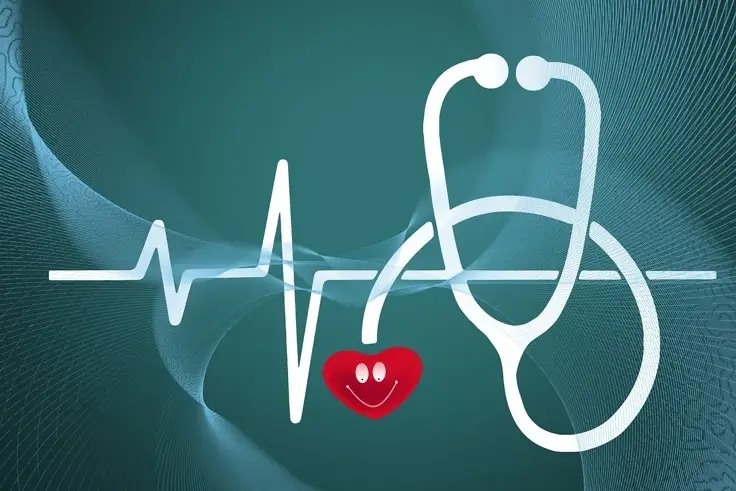introduction:
Heart rate and pulse rate are important indicators of cardiovascular health and fitness. Although often used interchangeably, they represent different physiological measurements. This article explains the difference between them, how to measure them accurately, and gives practical tips for effective monitoring. Additionally, this article explains how to measure these metrics, which are essential for assessing your overall health and fitness level.
Understanding the difference between heart rate and pulse rate:
What is Heart Rate?
Your heart rate is the number of times your heart beats per minute. This rate varies depending on your age, sex, physical condition, and other factors. A normal resting heart rate is between 60 and 100 beats per minute. Heart rate is usually measured using an electrocardiogram (ECG) or a heart rate monitor.
Additionally, this index measures how fast the heart contracts to pump blood around the body, serving as an important indicator of cardiovascular health. Heart rate varies with age, fitness, activity level, and overall health. It can be assessed both at rest and during exercise, during which heart rate typically increases to meet increased demand for oxygen and nutrients.
What is pulse rate?
Pulse rate is the number of times blood vessels expand and contract per minute. It is also called heart rate. Pulse rate indicates the number of pulses felt in a peripheral artery within the same time frame. It can be assessed manually by palpating the arterial pulse. It is usually measured at the wrist, neck, or ankle.
Moreover, this physical manifestation of heart rate reflects the rhythmic expansion and contraction of the arteries as blood is pumped by the heart.Pulse rate is measured manually by palpating an artery and counting the beats within a set interval (e.g., 15 seconds) and multiplying them together to determine the number of beats per minute.
Heart rate and pulse rate measurement:

Why measure heart rate?
A high heart rate can indicate a heart problem or poor physical fitness. Conversely, a low heart rate can indicate a heart electrical problem or good physical fitness. Measuring your heart rate can help you track your physical fitness levels and see if your heart is functioning properly.
Why measure pulse rate?
Pulse rate is an indicator of the health of your cardiovascular system. Pulse rate can help identify heart conditions, blood pressure, and other health issues. Additionally, measuring your pulse rate can help you track your fitness level and ensure that your cardiovascular system is functioning properly.
Equipment measurements:
Heart Rate Monitor: These devices use sensors to detect electrical signals produced by the heart and display your real-time heart rate, and can be worn as a chest strap, wristband, or built into a fitness tracker.
Pulse Oximeter: These devices measure heart rate by detecting changes in blood oxygen levels and are often used in clinical settings: they clip onto a fingertip or earlobe to assess pulse rate and oxygen saturation.
Instrumentless measurements:
Manual palpation: Place two fingers (usually your index and middle fingers) over the radial artery in your wrist or the carotid artery in your neck. Determine your heart rate by counting the number of beats you feel over a 60-second period.
Tips for measuring your heart rate accurately:
- Choose a quiet location where you can relax and concentrate on the measurement without any distractions.
- Maintain a steady posture and avoid excessive movement during the measurement.
- Before taking your measurement, sit or lie down for a few minutes to allow your heart rate to stabilize.
- Use correct technique to palpate the arterial pulse.
- Use your fingertips to feel the pulse in the wrist (radial artery), neck (carotid artery), or chest (brachial artery).
- Use your fingertips to apply light pressure over the pulse points to avoid restricting blood flow.
- Count the number of beats you feel within a given time frame, such as 15 or 30 seconds, then multiply those numbers to calculate your beats per minute (bpm).
- Take multiple measurements and calculate the average to ensure accuracy, especially if there is variation in the measurements.
- Use a stopwatch or the timer on your smartphone to accurately measure how long you want to count your beats.
- To avoid errors, ensure consistent pressure and counting methods for each measurement.
- Record your heart rate and pulse rate measurements over time to monitor changes and trends.
- If you have any concerns about your heart or pulse rate, or notice any irregular changes, consult your healthcare professional for further evaluation and guidance.
Interpretation of the results:
Once you have your heart rate or pulse rate readings, it’s important to interpret the results in context. Factors such as age, fitness level, medication use and underlying medical conditions can affect these values. If you have concerns about your heart rate or pulse rate readings, consult a medical professional.
Conclusion:
Effectively measuring heart rate and pulse rate is essential for monitoring your cardiovascular health and fitness progress. Whether using specialized equipment or manual palpation techniques, accurate assessment requires attention to detail and proper technique. Understanding the differences between these indicators and implementing best practices for measurement can provide valuable insight into your overall health. Regular monitoring and consultation with your healthcare provider is essential to maintaining cardiac health and achieving optimal fitness levels.







